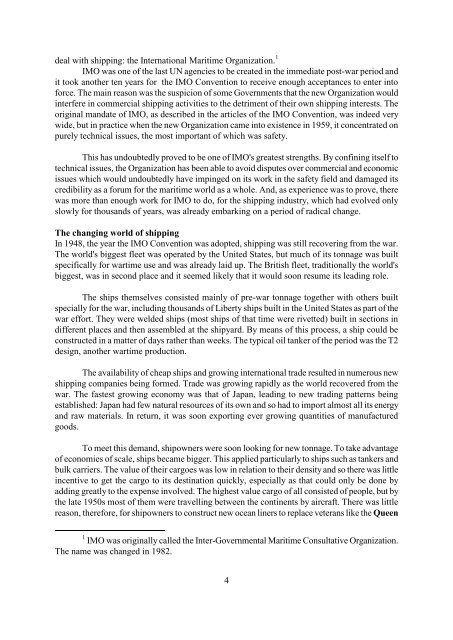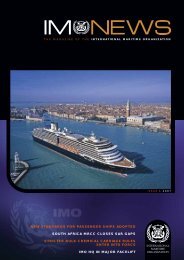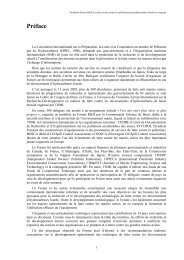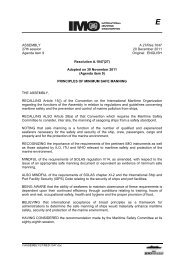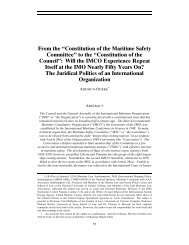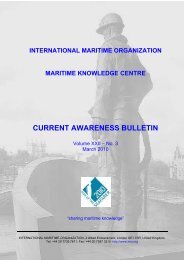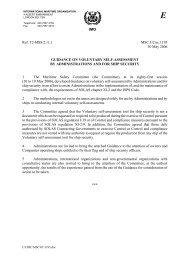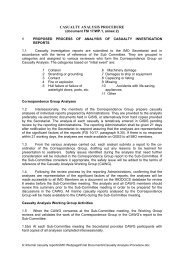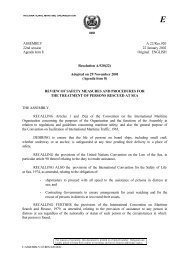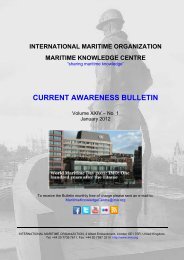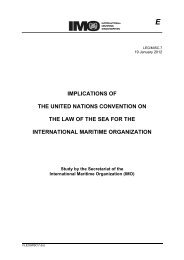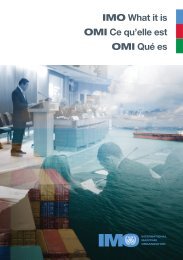wmd 1998 background document.pdf - IMO
wmd 1998 background document.pdf - IMO
wmd 1998 background document.pdf - IMO
Create successful ePaper yourself
Turn your PDF publications into a flip-book with our unique Google optimized e-Paper software.
deal with shipping: the International Maritime Organization. 1<br />
<strong>IMO</strong> was one of the last UN agencies to be created in the immediate post-war period and<br />
it took another ten years for the <strong>IMO</strong> Convention to receive enough acceptances to enter into<br />
force. The main reason was the suspicion of some Governments that the new Organization would<br />
interfere in commercial shipping activities to the detriment of their own shipping interests. The<br />
original mandate of <strong>IMO</strong>, as described in the articles of the <strong>IMO</strong> Convention, was indeed very<br />
wide, but in practice when the new Organization came into existence in 1959, it concentrated on<br />
purely technical issues, the most important of which was safety.<br />
This has undoubtedly proved to be one of <strong>IMO</strong>'s greatest strengths. By confining itself to<br />
technical issues, the Organization has been able to avoid disputes over commercial and economic<br />
issues which would undoubtedly have impinged on its work in the safety field and damaged its<br />
credibility as a forum for the maritime world as a whole. And, as experience was to prove, there<br />
was more than enough work for <strong>IMO</strong> to do, for the shipping industry, which had evolved only<br />
slowly for thousands of years, was already embarking on a period of radical change.<br />
The changing world of shipping<br />
In 1948, the year the <strong>IMO</strong> Convention was adopted, shipping was still recovering from the war.<br />
The world's biggest fleet was operated by the United States, but much of its tonnage was built<br />
specifically for wartime use and was already laid up. The British fleet, traditionally the world's<br />
biggest, was in second place and it seemed likely that it would soon resume its leading role.<br />
The ships themselves consisted mainly of pre-war tonnage together with others built<br />
specially for the war, including thousands of Liberty ships built in the United States as part of the<br />
war effort. They were welded ships (most ships of that time were rivetted) built in sections in<br />
different places and then assembled at the shipyard. By means of this process, a ship could be<br />
constructed in a matter of days rather than weeks. The typical oil tanker of the period was the T2<br />
design, another wartime production.<br />
The availability of cheap ships and growing international trade resulted in numerous new<br />
shipping companies being formed. Trade was growing rapidly as the world recovered from the<br />
war. The fastest growing economy was that of Japan, leading to new trading patterns being<br />
established: Japan had few natural resources of its own and so had to import almost all its energy<br />
and raw materials. In return, it was soon exporting ever growing quantities of manufactured<br />
goods.<br />
To meet this demand, shipowners were soon looking for new tonnage. To take advantage<br />
of economies of scale, ships became bigger. This applied particularly to ships such as tankers and<br />
bulk carriers. The value of their cargoes was low in relation to their density and so there was little<br />
incentive to get the cargo to its destination quickly, especially as that could only be done by<br />
adding greatly to the expense involved. The highest value cargo of all consisted of people, but by<br />
the late 1950s most of them were travelling between the continents by aircraft. There was little<br />
reason, therefore, for shipowners to construct new ocean liners to replace veterans like the Queen<br />
1 <strong>IMO</strong> was originally called the Inter-Governmental Maritime Consultative Organization.<br />
The name was changed in 1982.<br />
4


